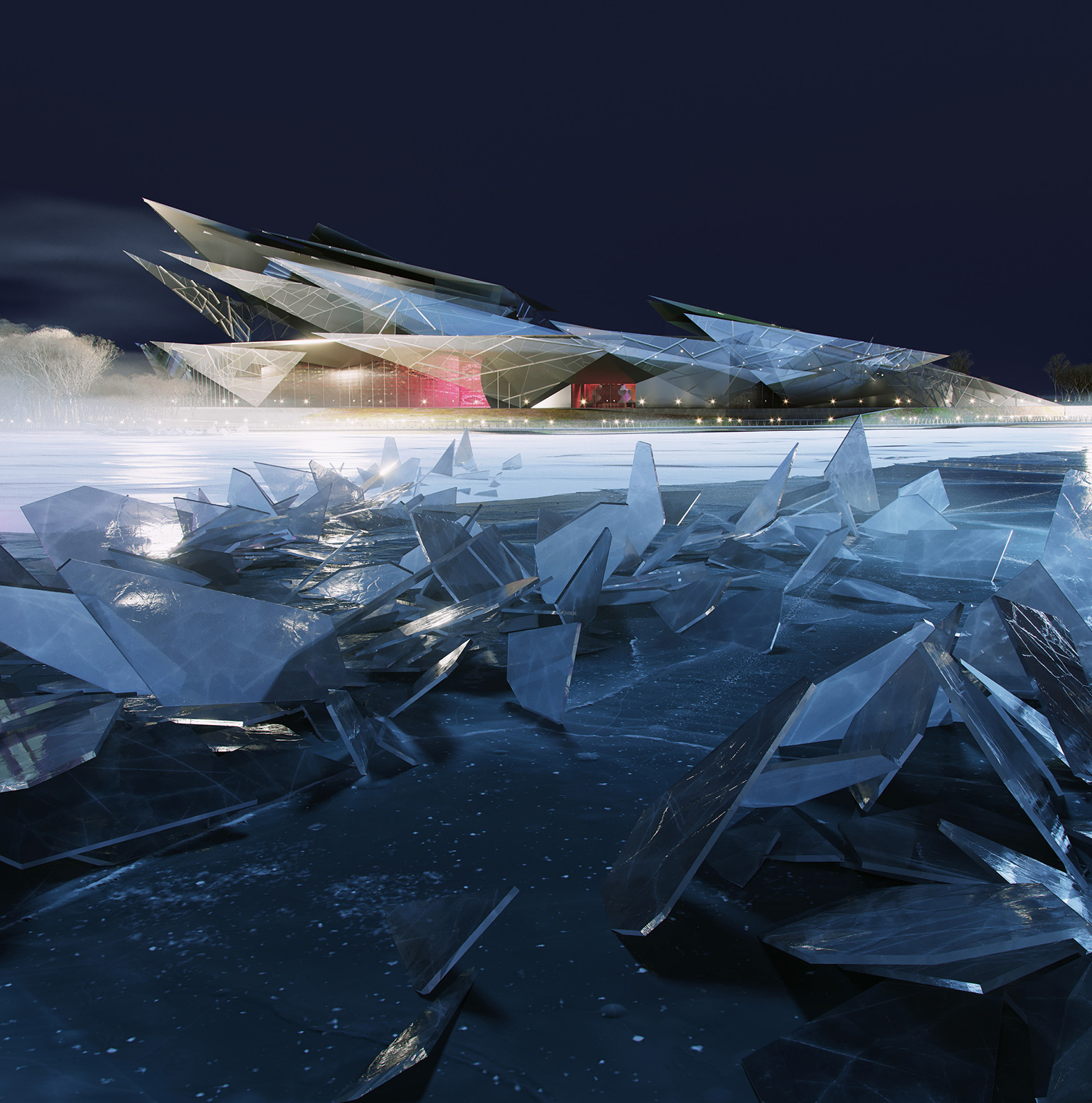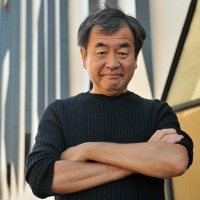The building is designed to be a part of the topography of the place, as a park with pedestrian routes and recreational areas, integrated and continuing the existing improvement of the embankments. A shape inspired by the soul of Tatarstan: Sharp and closed outside, but soft and warm inside. The building’s lighting is meant to bring warmth into the foyer and gradually dissolve it into the triangular panels of the facade. The bright decorative panels in the interior call back to traditional Tatar crafts and create a friendly atmosphere.
The foyer serves as the city’s “family room,” visually connecting the city and the lake. Entrances on all sides of the building continue pedestrian routes with natural light and ventilation. We create a comfortable environment and convenient routes for all theater workers — a spacious floor for artists and administration and comfortable workshops. We minimize the area of the basement floor to facilitate access and maintenance, as well as to reduce construction and operating costs.

Kamal Theater in Kazan by Kengo Kuma. Renderings by Atchain.
Project description by Kengo Kuma
We are very pleased to announce that Kengo Kuma & Associates has been awarded first prize in the competition to design the new Kamal Theatre in Kazan, Russia, together with the wonderful local architects Wowhause, German Bakulin, and brilliant engineers at Werner.Sobek
Our aim is to create a unique theatre deeply rooted in Tatar culture: inheriting the spirit and memories of the old theatre, its role as a gathering place for the community, and merging with the long history of the Kamal theatre and the city of Kazan.
At the exterior, a transparent facade subtly reflects the surroundings, blending architecture with nature and revealing the fluctuation of the atmosphere over time. The shifting triangular silhouette, a reference to the classic Kamal Theater, exposes a different character as viewed from each side.
For the interior and main hall, we worked with Arup performing arts designers, inspired by the overwhelmingly beautiful Tatar crafts and ornaments and drew from the intricate designs to create a warm, cozy, and inviting atmosphere with world-class performance experience capabilities combined with a particular focus on local theatre community.
It is a great honor to have the chance to work on such a unique project. We hope to keep learning from the local people and nature so that we can deliver a new theater, to be loved by the people of Kazan.






































